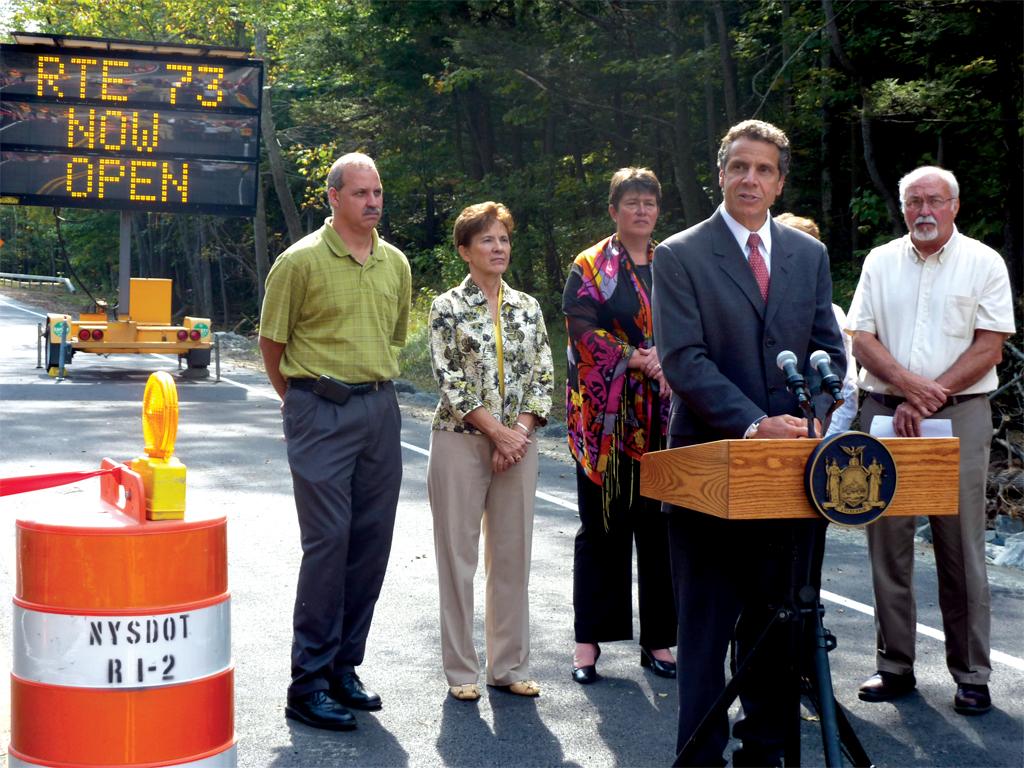
The federal government and New York State government are launching new programs aimed at easing the hardships endured by Southern Tier communities, families and individuals during and after the massive flooding that struck the region at the beginning of September.
FEDERAL RESPONSE
Federal Emergency Management Agency (FEMA) issued “major disaster declarations” for parts of the Southern Tier on Sept. 13, allowing federal funds to go toward flooding relief and recovery efforts. FEMA also opened a Disaster Recovery Center (DRC) located at the Johnson City Police Station and another at Nichols Elementary School in Tioga County Wednesday.
The DRCs are operated by state officials in conjunction with FEMA. According to a Sept. 19 press release from Gov. Andrew Cuomo’s office, the DRCs provide information on how displaced workers can access state disaster aid, as well as how senior citizens affected by the flood can benefit from state-funded programs.
“Before visiting a recovery center, I strongly recommend people seeking assistance to register with FEMA,” said Philip Parr, federal coordinating officer for FEMA. “Having spoken with or contacted state or local officials does not count. You must register with FEMA in order to apply for help.”
Those who qualify can register with FEMA online at http://www.DisasterAssistance.gov or by calling (800) 621-3362.
Binghamton University spokeswoman Gail Glover said FEMA and the Department of Social Services had officials on hand at the Events Center this week.
About 1,800 area residents were temporarily housed in shelters opened by the American Red Cross in BU’s Events Center and West Gym. The last of these flooding evacuees left the Events Center Wednesday.
NEW YORK RESPONSE
A release issued by Gov. Cuomo’s press office last Thursday stated that the governor was creating a “Hurricane Emergency Loan Program” (HELP) to make $25 million of state funding available to municipalities to fix critical infrastructure damaged by the flood.
“[HELP] would provide up to $1 million in no-interest loans for critical assessment and repair to damaged drinking water and wastewater treatment facilities,” the release said. “Repairs to pump stations, electrical equipment, treatment facilities and other critical equipment are eligible.”
Cuomo also ordered the creation of the “New York State Storm Relief Rebate Program,” which took effect Monday, to allow the flood’s victims to apply for grants to pay for the cost of repairing or replacing essential household appliances like furnaces and refrigerators.
“As with the aftermath of Hurricane Irene, we will do everything we can to help those affected by the recent storm recover and get their lives back on track as quickly as possible,” said Benjamin Lawsky, superintendent of the State Department of Financial Services.
The rebate program will give assistance on a first-come, first-serve basis to New Yorkers affected by flooding caused by either Hurricane Irene or Tropical Storm Lee. Its rebates might cover as much as 100 percent of the purchasing cost of some appliances, according to the Sept. 19 release from Cuomo’s press office.
To be eligible for rebates, applicants need to prove that they are purchasing an appliance to replace one which was damaged directly by these storms, as well as check that the damaged appliance was not covered by their insurance or by FEMA grants.
Lastly, Cuomo has also advanced a plan called “NY Works: Neighborhood Rebuilding Corps” for putting people to work assisting with rebuilding damaged infrastructure.
“Under this program, New York will hire part-time workers for approximately 20 weeks at an average wage of $15 per hour,” the press release stated. “Most of these workers will be directly employed by the State Labor Department and some will be employed by the affected counties.”
STUDENTS TAKE PART IN EFFORTS
Many students at Binghamton University have volunteered in recent weeks to assist residents impacted by the flood. BU’s Center for Civic Engagement (CCE) helped coordinate some of their efforts.
“Through fundraisers, donations and direct services, roughly 400 people came out [to the Events Center] to assist those in need,” CCE Director Allison Alden said.
Alden praised student clubs like the men’s Lacrosse Club for encouraging their members to aid in relief efforts.
Michael Nocerino, president of the men’s lacrosse club, said he and his teammates helped dispose of waterlogged and destroyed furniture in Owego.
“It seems they [residents] will be in need of volunteers for the foreseeable future,” Nocerino said.


